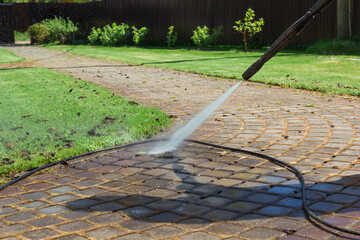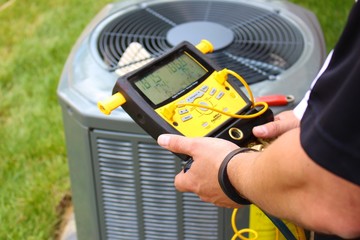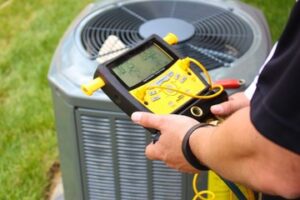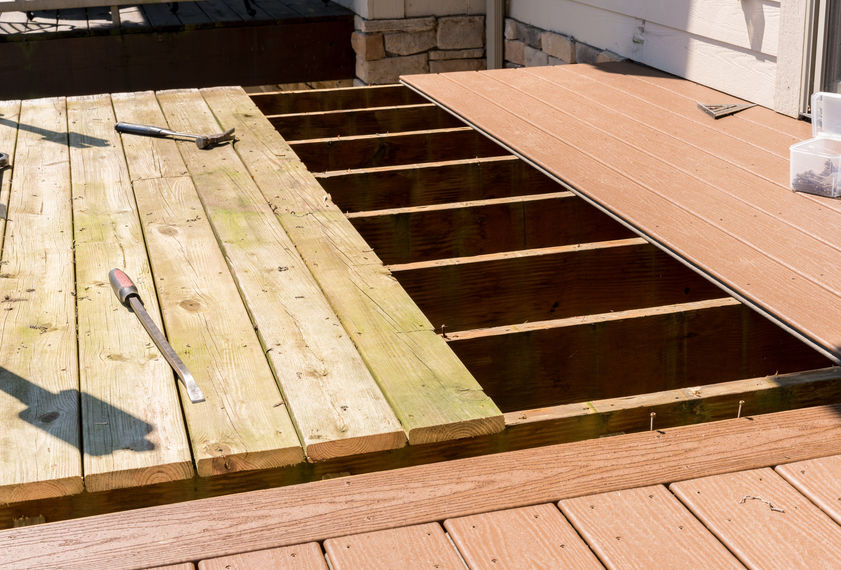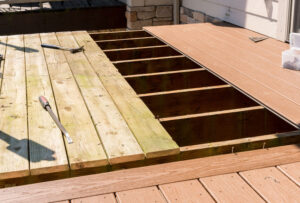Pressure Washing is the process of cleaning exterior surfaces with a high-pressure water spray. It is also known as power washing and it can remove loose paint, mold, mud, dust, salt and grime from a variety of surfaces.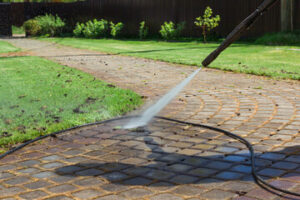
It is an effective and efficient way to clean a surface and can help preserve paint and other materials used on the exterior of your home.
Unlike regular cleaning methods, which can be labor intensive and not always effective, pressure washing provides a quick and powerful solution to remove built-up dirt, mildew, mold, algae and other debris from exterior surfaces. It is ideal for decks, patios, concrete paths, driveways, siding, outdoor furniture and much more.
When a professional uses a gas or electric powered pressure washer, water enters through the water inlet and is then combined with detergent that is suited for the surface being cleaned. This mixture is then pumped by a gas or electric engine to create a high level of pressurization. When the operator pulls the trigger, this pressurized water is ejected in an even spray over the surface being cleaned. This high-speed spray can break up even the most stubborn stains and grime, which is why it’s important to use the right equipment for the job.
Some areas of a building, such as rooftops over concession booths or restaurants, must be cleaned regularly to prevent grease build-up and other contaminants from entering the environment or clogging storm drains. Often, these areas are inaccessible to employees or residents using traditional cleaning methods. With the help of a portable or mobile pressure washer, however, these surfaces can be cleaned quickly and thoroughly to prevent safety hazards and environmental contamination.
For homeowners, a pressure washer can be used to clean items such as Trex or wood decks, brick paths and patios, siding, or even outdoor furniture. Regularly cleaning your home’s exterior can help prolong the life of the paint and other materials, as well as improve curb appeal.
To get the most out of your pressure washing equipment, make sure to invest in quality equipment and purchase a gas or electric powered unit with a variable PSI, GPM, and voltage. It’s also important to have the proper tools and safety gear to avoid injuries and property damage. In addition to a pressure washer, you’ll need a high-pressure hose, cleaning solutions, an extension wand, low-pressure nozzle and a broom or dustpan. You can find these tools at local hardware stores or specialty pressure washing shops.
Water Efficiency
Pressure washing equipment utilizes a high-velocity water jet to remove dirt, mildew, mold, algae, and other organic build-up from exterior surfaces. This process enables buildings, patios, decks, pools, outdoor furniture, farms, driveways, and more to remain clean and look newer for longer.
In addition to its cleaning prowess, this type of machine embodies the principles of sustainability through responsible water usage. This is why it has become a vital tool for the agriculture industry and other sectors that require a thorough and sustainable approach to maintaining their property.
A key aspect of the pressure washing process is the water pump, which provides pressurized water to the nozzle and delivers it at an impressive rate. While the amount of water used varies depending on the specific model, most systems use only two to three gallons per minute to deliver a stream that’s up to 2000 PSI.
This is a significant reduction in the amount of water that would otherwise be needed if traditional cleaning methods were used. Water-use efficiency can reduce energy demand, resulting in less expensive utility bills and lower environmental impact. It also minimizes the need to treat wastewater, reducing greenhouse gas emissions associated with electricity production.
Besides improving the appearance of residential and commercial property, this practice can prolong the life of building materials, such as paint. It can also help prevent the breakdown of concrete and other materials and protect them from weather damage.
Considering the global water crisis and the need to reduce greenhouse gases, prioritizing water-use efficiency is crucial for businesses and consumers alike. There are many ways to accomplish this, including promoting the use of appliances with the WaterSense label and installing low-flush toilets and efficient shower heads. Additionally, companies can implement education programs to encourage employees, residents, and school children to be more mindful of how they use water. Lastly, implementing rainwater capture is another important step in water-use efficiency, as it helps to mitigate the impact of storm drain pollution.
Safety
Pressure Washing is a dangerous job and the potential for injury is real. Employees must be fully trained and equipped to operate these powerful machines. Splash goggles, face protection and heavy-duty work gloves are required to keep workers safe. It is also important that the machine is never used in confined spaces, on stairs or where there are any tripping hazards.
The recoil of the spray nozzle at high pressure can push workers backward, so it is important to maintain proper footing and to not overreach. If the nozzle is pointed at electrical components, glass windows or other delicate surfaces, they can shatter under the force of the water. It is also important to only use the correct nozzle for the surface being cleaned.
Before using a pressure washer, block off storm drains to prevent water runoff from entering the building or paved surfaces. This is especially important if the surface is being treated with chemical detergents or cleaners. This will help reduce the risk of harmful residue drying on the surface and creating etching or corrosion over time.
During the cleaning process, it is important to wear protective gear and to keep children and pets away from the equipment. Wearing rubber gloves, insulated work gloves, safety goggles, hearing protection and long pants will help to protect your body from injury. Wearing a dust mask is also recommended to help prevent inhalation of fine particles from the surface you are cleaning.
When you are finished using the pressure washer, shut it down safely by turning off the pump and squeezing the trigger to depressurize the hose. Be sure to clean up and properly store the hose, spray nozzles and detergent bottles so they are not misplaced or tampered with. It is also a good idea to inspect the equipment for any obvious wear and tear or damage before each use. It is also a good idea to invest in small business insurance that covers your property, general liability and workers’ compensation should an accident occur. The Lee Company can handle all of your power washing needs, including providing the right pressure washers, the necessary ladders and all the required safety equipment.
Environmental Impact
The force of high-pressure water spray can remove a wide range of contaminants. This makes pressure washing an environmentally friendly cleaning method when done properly. However, if not done correctly, pressure washing equipment can cause environmental harm. This is because the force of the spray can strip paint off walls, dent siding, and shatter windows. It can also damage landscaping, grass, and other plants. In addition, if chemicals are used in conjunction with the pressure washer they can be toxic to the environment.
Water pollution is a concern with any type of high-pressure cleaning, because it can carry oil and other harmful chemicals into local waterways. One way to minimize this effect is to use non-toxic and biodegradable cleaning products that are formulated to be gentle on surfaces.
Additionally, eco-friendly service providers reclaim wastewater from the washing process to prevent it from being flushed into storm drains. This reduces their overall environmental footprint and helps them meet regulatory compliance requirements. In addition, utilizing electric pressure washers instead of gasoline models can further reduce the impact by reducing emissions and using renewable energy.
Other ways to make the process more sustainable include pre-soaking surfaces to cut down on washing time and water usage, and incorporating spot treatments that target specific areas of the property that need attention. It is also advisable to use water-efficient equipment and regularly inspect it for leaks and other problems.
Choosing green cleaning services is a great way to promote your company’s commitment to sustainability. Not only can this improve your reputation with environmentally conscious customers, but it can also help you save money by extending the lifespan of your business’s exterior and avoiding the need to replace it. This cuts down on the cost of raw materials and manufacturing, as well as reducing the need to extract more natural resources in order to make new building components. It is important to stay informed about local environmental regulations regarding pressure washing, and to follow them closely. This can prevent accidental environmental violations and protect your business’s reputation. For example, the runoff from pressure washing can carry pollutants into storm drains, which then lead to local waterways. To avoid this, businesses should implement strategies to contain and redirect the runoff, such as berms, containment mats, and storm drain covers.

